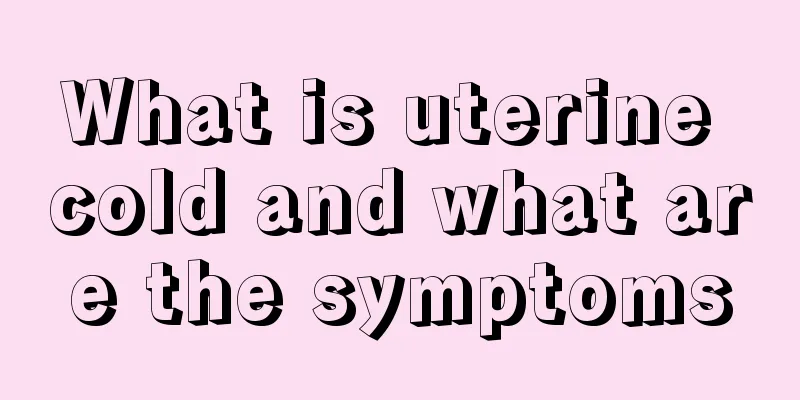[Medical Q&A] Does ST-T changes on the electrocardiogram mean coronary heart disease?
![[Medical Q&A] Does ST-T changes on the electrocardiogram mean coronary heart disease?](/upload/images/67eff82fb9ffe.webp)
|
Planner: Chinese Medical Association Reviewer: Fan Yifan, Chief Physician, Beijing Chaoyang Hospital, Capital Medical University ST-T changes refer to abnormal changes in the ST segment and T wave on the electrocardiogram. The ST segment and T wave represent the potential changes during the repolarization of ventricular myocytes. Under normal circumstances, the ST segment is mostly located on the isoelectric line, and the T wave is usually in the same direction as the main wave of the QRS group. When the ST segment is elevated or depressed, and the T wave is high, flat, bidirectional or inverted, it is an ST-T change. ST-T changes may be caused by a variety of factors. Heart lesions, such as coronary heart disease, myocardial hypertrophy, myocarditis, valvular heart disease, etc., can lead to ST-T changes. In addition, diseases other than the heart may also cause ST-T changes, such as cerebrovascular accidents, endocrine diseases, electrolyte disorders (such as hypokalemia, hypomagnesemia), drug effects (such as certain antiarrhythmic drugs, digitalis, etc.), and the influence of physiological factors such as autonomic dysfunction, excessive fatigue, and mental stress. It can be seen that ST-T changes are not an exclusive sign of coronary heart disease, and there may be a variety of causes behind them. Although ST-T changes are not specific to coronary heart disease, coronary heart disease is indeed an important cause of ST-T changes. In patients with coronary heart disease, due to insufficient blood supply to the coronary arteries, myocardial cells may suffer from ischemia and hypoxia, which manifests as ST-T changes on the electrocardiogram. Especially when patients have angina pectoris or acute myocardial infarction, ST-T changes on the electrocardiogram often have important diagnostic value. When ST-T changes appear on the electrocardiogram, patients do not need to panic too much. The correct approach is to consult a professional doctor in time for a detailed interview and physical examination. The doctor will make a comprehensive judgment and analysis based on the patient's symptoms (such as chest pain, chest tightness, palpitations, dyspnea, etc.), medical history (such as hypertension, diabetes, hyperlipidemia and other risk factors), and other test results (such as cardiac ultrasound, myocardial necrosis marker detection, coronary artery CTA, coronary angiography, etc.). If coronary heart disease is highly suspected, the doctor may recommend further examination to clarify the condition of the coronary arteries. If coronary heart disease is ruled out, it is necessary to actively look for other possible causes and give corresponding treatment. |
<<: [Medical Q&A] Do you know what "sinus rhythm" means in an electrocardiogram report?
>>: [Medical Q&A] Are premature heart beats a sign of the heart being “lazy”?
Recommend
How to prevent adnexitis, experts give you tips
Adnexitis is very common among white-collar women...
How can women better slow down aging?
Women all hope that they can become more beautifu...
Pregnant women have itchy bumps on their hands
Pregnant women will experience some physical disc...
Does sugar-free mooncake use xylitol? What kind of sugar is used in sugar-free mooncake?
As we all know, there are many types of mooncakes...
Why are the biscuits very dry? Which biscuits are very dry?
As we all know, pancakes are a very common snack ...
The secret of electronic endoscopes in gastrointestinal endoscopy: a journey of strict "cleaning" for one person per endoscopy
When facing a gastrointestinal endoscopy, many pa...
How to treat labia itching
In life, due to the particularity of women's ...
What to do if you have stomach pain on the third day of menstruation
Menstruation is a common thing. Due to the differ...
What is lobular hyperplasia?
Many women are very familiar with bilateral lobul...
What are the harms of abortion to the uterus?
In fact, not only does artificial abortion cause ...
Why is my hair falling out?
I believe that many people are facing the dilemma...
What to do if you have diarrhea after abortion
Abortion is very harmful to women's bodies. E...
The secret of women's youthful appearance
The aging problem is a problem that every female ...
A woman dreamed of two little girls
For some people, falling asleep is the most comfo...
What is the difference between bean paste and soybean paste? Nutritional analysis of soybean paste
The main ingredients of soybean paste are protein,...









